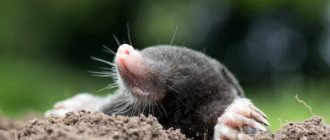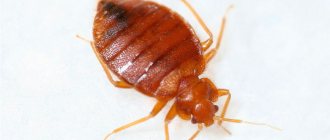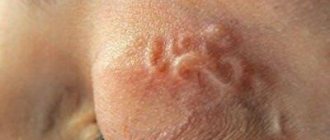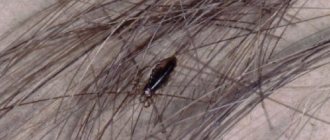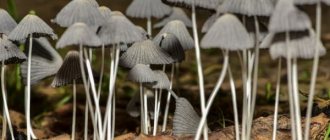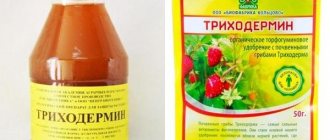Baker's yeast: friends or enemies to our body?
I think it’s time to talk about the processes occurring in yeast dough (baking), because as I understand it, few people actually understand what happens during fermentation and baking? Is yeast harmful? And should we be afraid of them? Let's start!!!
What is “yeast”?
Yeast
is a group of unicellular fungi that have lost their mycelial structure due to the transition to living in liquid and semi-liquid substrates rich in organic matter.
*Mycelial structure is the structure of a fungus consisting of fluffy, filamentous, cobweb-like, cotton wool-like or mealy-like colonies.
*Substrate is the place where organisms live and develop. Serves as a breeding ground for various microorganisms and organisms, including yeast fungi.
Interesting fact:
Yeasts of the genus Candida are components of the normal microflora of humans, however, with a general weakening of the body by injuries, burns, surgery, prolonged use of antibiotics, in early childhood and old age, etc., fungi of the genus Candida can develop en masse, causing a disease - candidiasis. There are various strains of this fungus, including quite dangerous ones.
Types of yeast:
- Ascomycetes (marsupial fungi)
-Saccharomyces, (this type of yeast is used in the food industry, pharmaceuticals, biotechnology, etc.)
-Taphrinomycetes,
-Schisosaccharomycetes.
- Basidiomycetes (this species is not useful and is not used in the food and other industries!!!!)
In the food industry, yeast fungi from the subspecies of Saccharomycetes are used, which literally translates as “sugar-eating.”
What is “fermentation”?
Fermentation
– this is the process of breakdown of an organic substrate (sucrose), which occurs under the influence of microorganisms (yeast), followed by the fermentation of alcohol (alcoholic fermentation) and the release of carbon (carbon dioxide).
Is fermentation possible without sugar?
Yes, it's possible! Yeast ferments not only white sugar, but also glucose, fructose, maltose, etc. Therefore, yeast dough can be made without adding sugar. This happens because wheat flour also contains natural sugars necessary for fermentation. White (beet) sugar is added to speed up the process!
The process that occurs in dough when yeast ferments?
The main process is alcoholic fermentation.
A sign of its onset is an increase in the test volume.
For this process, you need to knead the dough at an evenly spaced period of time - that is, saturate the dough with oxygen and release the carbon dioxide (carbon) formed during the fermentation process.
A sign that fermentation has ended is a fruity-vinegar smell.
If we ignore this sign and leave the dough to ferment, then it will ferment and after baking, instead of an airy, tender and tasty baked product, we will get a sour one!
What happens to yeast spores during baking?
When baking bread (at a temperature of 180 degrees Celsius), all yeast spores die within 30-40 minutes!!!
Therefore, when fermenting, you should not put the bowl of dough in a too warm place. The optimal fermentation temperature is from 30 to 40 degrees Celsius. At 40 degrees and above, the spores slow down, and at 50 and above they begin to die!!!
Therefore, when baking yeast dough, all spores die!
And they will not penetrate into your body in any way and will not multiply there!!!
Yeast thermophilicity is a fiction! Which is not supported by any research. Any yeast spore dies at temperatures above 60 degrees Celsius!!!
The benefits and harms of baker's yeast in baking?
Baker's yeast, if not taken raw, is not harmful to humans!!!
Having read a large amount of literature and articles, I can say that baker’s yeast (which is discussed in this article) has no benefit or harm to the body as such. Their function in the food industry is to saturate the dough with carbon dioxide (carbon) and thereby make the baked goods fluffy, soft and melting in your mouth!
Conclusion:
If for some reason you were afraid to eat baked goods made from yeast dough (homemade - I’m not talking about store-bought ones since in this case it’s a large-scale production and there are different rules), then you can safely bake and enjoy!
You can also replace white sugar in the recipe with: honey (the baked goods will be more fluffy). Or replace it with any other product such as: sucrose, fructose, maltose, glucose, etc. - all this is suitable for fermenting dough!
And also for fermentation - syrups from fruits (which are obtained by evaporating or boiling fruits without adding sugar with water) are suitable. Such syrups contain natural sugars - namely fructose.
Thanks for reading!
I will be grateful for likes, reposts on social networks and your comments)
If you have any questions, write in the comments, I will be happy to answer!
Source: https://zen.yandex.ru/media/id/5c44c939ebbae500ac646f68/hlebopekarnye-drojji-druzia-ili-vragi-nashemu-organizmu-5c932a8dfe082900b388542d
Yeast is a parasite or saprotroph – All about parasites
OUR READERS RECOMMEND!
Our readers successfully use Intoxic to get rid of parasites. Seeing how popular this product is, we decided to bring it to your attention. Read more here...
There are a huge number of microorganisms in the surrounding world, and each has its own unique influence and purpose. Some bring benefit or harm, and some are an integral part of the production sphere.
Microorganisms are small living organisms, mostly single-celled, which can only be seen under a microscope. Microbes (microorganisms) are in most cases unicellular, however? There are also multicellular and noncellular.
Depending on their properties, structure, and habitat, microbes are classified into viruses ( a non-cellular infectious agent that can reproduce only inside living cells
) and phages, bacteria, fungi and yeast.
Viruses are a type of microorganisms that do not have a cellular structure. Viruses can only be examined under electron microscopes, since their size is negligible.
Mushrooms are a type of living organisms that require ready-made organic substances, since, unlike other types, they do not synthesize them independently due to the lack of chlorophyll. In this regard, they need ready-made nutrients for development. Many types of fungi activate diseases in humans, animals, and plants.
Yeasts are immobile microbes with a unicellular structure. The structure of yeast is similar to mushrooms. The largest amount of yeast is found in the environment (on soil and plants). People also use the properties of yeast for industrial purposes, for the production of drinks and food.
Bacteria are microorganisms that lack a cellular structure. Some types of bacteria are able to survive in fairly harsh conditions. Reproduction occurs very quickly in time, dividing into two parts. Bacteria ( also eubacteria (lat.
) (
also eubacteria (lat
) are capable of developing diseases in humans, like yeast.
Division of bacteria depending on interaction with the environment
Bacteria are living organisms that are the oldest inhabitants of the Earth. Due to the fact that bacteria are the first representatives of life on the planet, their structure is quite primitive. Bacteria are divided into heterotrophs and autotrophs.
Autotrophs find food for themselves without anyone’s help, that is, on their own. And heterotrophs feed on ready-made nutrients. In turn, heterotrophs are divided into parasites, symbionts and saprophytes.
Types of parasites:
- Bacteria are parasites. Parasites are living creatures that feed and live at the expense of an organism of another species (the host) and cause harm to it.
- Bacteria symbionts. Symbionts are heterotrophic living organisms that live in symbiosis with creatures of another species, but unlike parasites they do not cause harm.
- Bacteria are saprophytes. Saprophytes are heterotrophs that feed on organic substances that are formed during the decomposition of dead organisms. For the most part, this happens as follows: the enzyme substrate is injected, a solution is formed, and then it is absorbed by the saprophyte. Saprophytes are the largest subsection among bacteria. Different saprophytes have different requirements for organic compounds, which play a major role in the life cycle of bacteria.
Differences and similarities between saprophytes and parasites
The life schedule of saprophytes is very similar to that of parasites. In some cases it is very difficult to distinguish them from each other. Some parasites behave as semi-saprophytes during their lives.
At the same time, some types of saprophytes select and use living organisms weakened by disease or time for housing and food.
In this regard, scientists have a need to identify separate intermediate categories of heterotrophs - facultative saprophytes and parasites, obligate parasites:
- Facultative saprophytes (another name for semiparasites or conditional saprophytes) are bacteria whose development occurs without the presence of a living organism. During some time of the life cycle, development and functioning are similar to saprophytes, but the rest of the time their behavior is characterized by parasitic activity. Facultative saprophytes are of great importance for the circulation of substances. Only certain living organisms can become hosts for these heterotrophs.
- Facultative parasites (conditional parasites or semi-saprophytes) are a type of bacteria that live as parasites but feed as saprophytes. But this type of nutrition is supported by facultative parasites ( one of the types of coexistence of organisms
) at a certain period of life, since upon reaching the required stage of development or living conditions, they move into the tissues of living, but weakened plants and already lead a parasitic lifestyle there. - Obligate parasites ( one of the types of coexistence of organisms
) (or obligate) are a type of parasites that are able to use only living plant cells for nutrition, and after death, the bacteria die along with it. Throughout their entire life cycle, these microorganisms lead a parasitic lifestyle. In natural and artificial environments under saprophytic conditions they do not have the opportunity to develop.
The role of saprophytes in the environment
The importance of saprophytes for nature is great, since most, if not all, are involved in the decomposition and transformation of organic waste.
Saprophytes are a kind of orderlies, due to the fact that the life cycle of every living thing ( "Live" - album of the rock group Night Snipers
) of the organism ends in death. That is why there will always be food for this type of bacteria.
In addition to the fact that saprophytes themselves feed on dead living beings and plants, they form food for other organisms by decomposing dead tissue into smaller components.
In addition to the breakdown of organic matter, saprophytes take an active part in the mineralization and transformation of chemicals.
Life activity of parasites
Parasites spend almost their entire life inside another organism and feed on its living beings ( "Alive" - album of the rock group Night Snipers
) cells.
The plant or animal within which the bacterium lives and whose cells it feeds on is usually called the host.
Parasitism is a relationship between one type of living organism (parasite) and another (host), during which the first lives and feeds at the expense of the second.
Viruses
Viruses are parasites that do not show any signs of life while outside the cell of a living organism. Due to the fact that viruses themselves do not have a cellular structure, they also do not produce energy, do not feed, do not grow, and are not capable of metabolism. Being outside a living cell, viruses are similar to inanimate matter, but there are two properties that distinguish them:
- The ability to reproduce, that is, to reproduce forms similar to oneself.
- Heredity and variability.
Life cycle of a virus ( a noncellular infectious agent that can reproduce only inside living cells
) consists of the following steps:
- Penetration into a living cell.
- A change in metabolism inside the cell, causing the production of viral nucleic acids and proteins.
- Self-assembly of the virus inside the cell from produced viral acids and proteins.
- From an overabundance of newly formed viruses ( a non-cellular infectious agent that can reproduce only inside living
cells), the cell dies - Viruses leave the host cell.
By colonizing human and animal cells, viruses provoke the development of many dangerous and sometimes fatal diseases.
Parasites, viruses, bacteria and humans
Viruses, parasites ( one of the types of coexistence of organisms
), bacteria - all these microorganisms had a direct impact on human evolution. And yet, microorganisms benefit humans, despite the harm they cause.
Help of microorganisms to humans
Ten facts about how parasites, viruses and bacteria help humans:
- . Thanks to modern science and genetics, it is now reliably known about who infected our ancestors, which subsequently turned out to be an evolutionary impetus.
- Use of larvae and leeches. European leeches have been used in medicine for many years. But due to the evolution of germ theory, their use has ceased in many countries. But later cosmetologists and surgeons returned to them. Leeches get rid of a swollen face, black eyes, and help with the reattachment of body parts (ears, skin, etc.). In addition to leeches, their larvae are also effective, so thanks to them a separate industry has emerged - biotherapy.
- Parasites and the immune system. Parasitic therapy is parasitic, since negative outcomes still prevail over positive ones. However, one cannot ignore the successful consequences. Intentional infection with parasites can relieve neurological, allergy and other diseases. And this has been proven through experiments carried out by a large number of scientists.
- Virotherapy. This therapy involves introducing a reprogrammed virus into a person. Thus, some viruses were transformed to treat cancer, measles, and tumors.
- Viruses for the treatment of bacterial infections. Bacteriophages are viruses that hunt bacteria. Bacteriophages change the metabolism of bacteria and in this way destroy it. Currently, certain diseases in humans are also treated with the help of phages.
- Vaccines are the same virus of a disease, but weakened, which is administered so that the immune system has an idea in advance how to compete with the disease.
- Recycling. Bacteria ( also eubacteria (lat
), living in the surrounding world and feeding on dead cells of plants and animals, benefit nature by clearing the earth of waste. - . Without the bacteria naturally living in the gastrointestinal tract, a person might even die, since they help both digest food and work in tandem with the immune system, protecting life.
- Skin bacteria. Thanks to evolution, we are not born dead. And here's why - after leaving the mother's womb, the child is attacked by bacteria, and more specifically, the skin. Bacteria live on the skin from the very moment they appeared in this world and this is completely normal, because in a certain way they protect it from other harmful microorganisms.
- Cyanobacteria or algae are among the oldest microorganisms living on Earth. Thanks to algae, we and other living organisms appeared on our planet, since cyanobacteria are the first photosynthesizers. It was they who produced oxygen, vital for all life on our planet.
Many types of bacteria, viruses and parasites have their place in the living environment and have a unique purpose.
Source: https://askaridy.bez-glista.ru/askaridy/drozhzhi-parazit-ili-saprotrof/
Kill to live
Parasitic bacteria are overwhelmingly pathogenic microorganisms. The bodies or cells of living things are their natural habitat where they feed, grow and reproduce. As a result, the tissues or organs affected by them suffer serious damage.
Pathogenic bacteria not only feed on the host’s body, their toxic secretions are carried by the blood throughout the body, causing serious complications. Prokaryotic parasites become causative agents of dangerous diseases.
- cholera;
- plague;
- botulism;
- dysentery;
- salmonellosis;
- pneumonia in various forms;
- tuberculosis, and this list can be continued for a very long time.
Pathogenic protozoa adapt very well to life in the body, and their ways of getting inside are quite varied. Food, water, personal contacts with an infected person, household items and airborne transmission are fully used by pathogens.
Despite the fact that it would be better for a person not to meet with some saprophytes, knowledge of what they feed helps to invent new weapons against them. Or scientists have the power to create ideal conditions for cultivating the species that we need.
Higher education in philology. I have been in copywriting since 2012, and I also edit/post articles. Hobbies: psychology and cooking.
Yeasts are parasites or saprotrophs
These organisms should not be eaten:
- pigs;
- Helvelians;
- pale toadstools;
- spring toadstools;
- white toadstools.
The main distinguishing features of saprophytes from symbionts and parasites are the peculiarities of their nutrition and structure.
To maintain life, saprophytes require a nutrient substrate, from which they absorb nutritional compounds with the help of mycelium. The method of their nutrition is diffuse-osmotic, consisting in the absorption of nutrients.
In contrast to them, for example, symbionts, for their nutrition, enter into mutually beneficial relationships for both species, more often with trees, algae, and other fungi and bacteria.
The main share in the structure of the saprophyte is mycelium, which is especially well developed in such as yeast and mold.
Differences and similarities between saprophytes and parasites (one of the types of coexistence of organisms)
The life schedule of saprophytes is very similar to that of parasites. In some cases it is very difficult to distinguish them from each other. Some parasites (one of the types of coexistence of organisms) behave like semi-saprophytes during their lives.
At the same time, some types of saprophytes select and use for housing and food living organisms weakened by disease or time (“Alive” - album of the rock group Night Snipers).
In this regard, scientists have a need to identify separate intermediate categories of heterotrophs - facultative saprophytes and parasites, obligate parasites:
- Facultative saprophytes (another name for semiparasites or conditional saprophytes) are bacteria whose development occurs without the presence of a living organism. During some time of the life cycle, development and functioning are similar to saprophytes, but the rest of the time their behavior is characterized by parasitic activity. Facultative saprophytes are of great importance for the circulation of substances. Only certain living organisms can become hosts for these heterotrophs.
- Facultative parasites (one of the types of coexistence of organisms) (conditional parasites or semi-saprophytes) are a type of bacteria that live like parasites, but feed like saprophytes. But facultative parasites maintain this type of nutrition at a certain period of life, since upon reaching the required stage of development or living conditions, they move into the tissues of living, but weakened plants and already lead a parasitic lifestyle there.
- Obligate parasites (or obligate) are a type of parasites that are able to use only living plant cells for nutrition, and after death, the bacteria die along with it. Throughout their entire life cycle, these microorganisms lead a parasitic lifestyle. In natural and artificial environments under saprophytic conditions they do not have the opportunity to develop.
Saprophytes
Both bacteria and fungi are saprophytes. Bacteria belonging to this group feed on organic matter from dead organisms.
The group of saprotrophs includes lactic acid, soil, butyric acid bacteria and others. This type of fungi includes organisms that develop on humus of plant origin.
They can be divided into two groups - edible and inedible.
Examples of mushrooms that are not harmful to health:
- Champignon;
- raincoats;
- umbrellas;
- morels;
- dung beetles;
- lines (after pre-processing);
- cystoderm;
- cobwebs.
These organisms should not be eaten:
- pigs;
- Helvelians;
- pale toadstools;
- spring toadstools;
- white toadstools.
These are organisms that enter into symbiosis with other species and receive mutual or unilateral benefits from this. Not only aquatic, but also land organisms participate in such relationships. Symbionts create beneficial relationships with each other, with fungi, bacteria and multicellular organisms. But the number of algae susceptible to symbiosis is small.
Conclusion
Saprophytes return processed biomass to the soil and thereby improve the living conditions of plants; without them, the cycle of substances in nature will simply stop.
Source: https://okwedding.ru/drozhzhi-saprofit-ili-parazit/
Interesting facts about mushrooms (video)
Fungi do not bypass any plant community, taking part in their life. They work closely with them, ensuring the mineralization of organic elements, and also actively participate in the cycle of substances in nature.
Bacteria, like all organisms living on Earth, must receive nutrients for their growth, development and reproduction. Some species do not consume any organic matter, and obtain energy through complex processes of oxidation of inorganic substances. They are called chemotrophs, and for heterotrophic organisms (animals, fungi and most protozoa), maintaining vital activity is possible only through ready-made organic compounds. Depending on how and what heterotrophic bacteria feed on, they can be divided into four groups.
Saprophytic mushrooms: examples
There is a type of fungi that feeds on dead remains, and there are those that consume the nutrients of living organisms. Saprophytic fungi settle and feed on the remains of animals or plants (scavengers), or excrement.
Description of saprotrophic fungi
Suitable for food
Examples of mushrooms that are not harmful to health:
- Champignon;
- raincoats;
- umbrellas;
- morels;
- dung beetles;
- lines (after pre-processing);
- cystoderm;
- cobwebs.
Unfit for food
These organisms should not be eaten:
- pigs;
- Helvelians;
- pale toadstools;
- spring toadstools;
- white toadstools.
Structure and methods of nutrition
Fungi belong to the species saprophytes or saprotrophs, which form many spores in the process of life. They scatter to surrounding plants or animal remains, facilitating the reproduction and spread of the mycelium. Examples of vegetation that organisms like to settle on:
- cones;
- branches;
- hemp;
- stems of annual grasses;
- needles and foliage;
- feathers and horns.
Different saprophytes or, as they are also called, decomposers, are characterized by different types of substrate on which they settle and feed. So, for the summer honey mushroom, the best food is the remains of deciduous trees. False honey mushrooms feed only on needles. But the white dung beetle miraculously exists in places highly saturated with nitrogen.
What types of saprophyte mushrooms are there?
Representatives of the genera Penicillium and Mucor cause food spoilage
The variety of saprophytes is surprising. The names of the most famous:
Mukor: This is a lower mold fungus. Included in the class Zygomycetes. It is aerobic, that is, existence is impossible without oxygen. The mycelium of mucor is unicellular, has many nuclei. All representatives of this genus settle in the upper layers of soil, horse manure, food and organic debris.
The body of this organism looks like thin threads - this is a mycelium. On the branches or hyphae of the mycelium, small black heads grow, which contain spores. Mucor feeds on organic matter. The scavenger mushroom, as it is also called, because it does not leave waste. Mucor can also appear on a living, but sick organism.
When he dies, all the remains are processed.
Aspergillus: a mold fungus belonging to the higher aerobic species. The genus of these organisms has hundreds of species. All of them are quite common and grow in different climate zones. They take root on various substrates and create fluffy white colonies. But over time the color changes.
Aspergillus has strong mycelium and septa. It reproduces, like other saprotrophs, by spores. The organism lives in soil, which contains a lot of oxygen. The organism appears as mold on top of the substrate. This particular mushroom is dangerous. It affects products that contain starch.
The organism grows inside and on the surface of the tree.
Irina Selyutina (Biologist):
Fungi of the genus Aspergillus were first described (cataloged) in 1729 by the Italian P. Micheli. Although their natural habitat is the upper soil horizons, especially in southern latitudes, they are most often found on various products, mainly of plant origin.
The vegetative body of Aspergillus is a multicellular and very branched mycelium. Mycelial cells are multinucleated. The fungus is characterized by the ability to form aerial mycelium.
Representatives of the Aspergillus niger group, which are most actively used in industry and laboratory research, are of greatest practical importance. At one time, the species A. niger was figuratively called “biochemical frog” by L.I. Kursanov.
Aspergilli differ from penilla and mucor in that their fruiting filaments at their apex have thickenings with rod-like outgrowths, which in general terms resemble a “shaggy head”. Chains of spores are released from these outgrowths.
Penicillium: these representatives of higher fungi are not uncommon in nature. They belong to imperfect fungi. Of particular value is the green racemose mold - penicillium aureus. The widely known antibiotic penicillin is produced from it. Penicillium lives in the soil.
The structure is similar to that of the Aspergillus fungus. The vegetative mycelium is branched, colorless and multicellular. This (structure) of the penicillium fungus differs from mucor - the latter has a protozoan mycelium. The hyphae of the organism are immersed in the substrate or located on its surface.
Erect conidiophores form brushes that carry chains of spores. These chains have from one to three tiers and can also be asymmetrical. These fungi reproduce by spores. It is saturated by absorbing organic matter. Some representatives are weak plant parasites.
The development of penicillium leads to food spoilage.
What is the difference between saprophytes, symbionts and parasites
There are parasitic, saprophytic and symbiont fungi. The difference lies in the way of eating.
Symbionts
These are organisms that enter into symbiosis with other species and receive mutual or unilateral benefits from this. Not only aquatic, but also land organisms participate in such relationships. Symbionts create beneficial relationships with each other, with fungi, bacteria and multicellular organisms. But the number of algae susceptible to symbiosis is small.
Parasites
They exist at the expense of living organisms, feeding on their living flesh. Parasites spend almost their entire life in the host’s body. They not only reduce the amount of nutrients, but also poison the carrier organism (host).
It is interesting that pathogenic fungi also lead a saprophytic and parasitic lifestyle. These microorganisms of diverse origin live in different places and conditions. Such organisms play an important role in science, so they are specially grown in an artificial environment for study. The following types of environment are distinguished:
- Non-selective: the most popular type for is Sabouraud agar. It is high in carbohydrates. Often the environment is modified by adding antibiotics, cycloheximide or chlorhexidine. And also to isolate fastidious pathogens, the medium is enriched with 5–10% CA, adding heart and brain extract.
- Selective: such a medium is prepared from a non-selective substrate by adding penicillin, streptomycin and chloramphenicol.
Group Imperfect fungi, or Deuteromycota. Parasitic fungi. Biology lesson 5th grade RESULT...!!! How to grow a lot of mushrooms in your summer cottage. September 2021. How to grow MUSHROOMS.
Two groups can be distinguished:
- Fungi choose living plants or producers for their existence. These fungi feed on living plant cells. They do not grow on artificial soil.
- Fungi live on plant remains or decaying organic matter. But there are few such representatives; basically, these organisms can move from one phase to another.
Thus, autumn honey fungus is a saprophyte and develops on dead stumps. It happens that it grows on living trees, and in such conditions it becomes a parasite.
But parasitic tinder fungi, living on living plants, are occasionally found on dead parts of the tree. There are known cases where fungi at different stages can behave both as saprophytes and as parasites.
And even a typical parasite can be grown in an artificial nutrient soil called agar.
Saprotrophs: examples and nutritional features of fungi
Saprotrophic fungi exist where there is a favorable environment for them: in fallen dry leaves, animal remains, rotten stumps, straw, cones and decaying wood. They contribute to their mineralization and decomposition, resulting in the formation of humus necessary for higher plants.
Functions and Features
Saprotrophs differ from parasitic fungi in that they have a different structure. The main part of their body consists of mycelium. It is especially well developed in mold and yeast. During the process of cell division into mycelium, conidia are formed.
Their shape is filamentous, spiral, stellate and spherical. The color of such formations is white, milky, gray and brown. They can only be seen with a microscope.
The most common saprotrophs are yeasts, cap yeasts and molds.
Mushrooms need a substrate for nutrition, from which they absorb the necessary nutrients with the help of mycelium. The feeding method of saprotrophs is called diffuse-osmotic.
Saprotrophs are fungi that feed on organic compounds that are formed as a result of the process of decomposition of plant and animal remains and animal excrement. They, unlike parasitic fungi, do not live in living organisms and usually do not cause harm to the human body. They are unable to produce organic matter.
These mushrooms are inherently destroyers - decomposers. They are a significant link in the cycle of matter and energy. With their help, the entire vast natural biomass decomposes, eventually turning into soil. And this is very important for the life processes of all life on our planet.
Mother-in-law's tongue mushroom: description, beneficial properties, recipes
Saprotrophs do not pollute the environment and do not leave solid waste. They form many spores, allowing them to easily spread to any food source (Penicillium, Rhizopus and Mucor). Sometimes saprotrophs cause damage to wooden structures of houses and cause spoilage of food, fruits, seeds, feed and paper.
Types of mushrooms
Saprotrophs are usually divided into several groups, the main of which are xylotrophs (woody), aquatic, humic, soil and coprotrophs (dung). They differ in the way they feed.
For example, there are sugar mushrooms that use organic acids, alcohols and simple carbohydrates. Others develop on substrates containing chitin, proteins and cellulose.
For this reason, during the entire process of decay of plant remains, one can observe the replacement of some species by others.
There are also keratinophils among saprotrophs, which decompose keratin, which is a very stable protein. It is found in hair, hooves, bird feathers, horns, etc. The nutrition of keratinophils is quite specific, inaccessible to other organisms. They grow slower than others. Examples of saprotrophic mushrooms include the following:
- lamellar;
- marsupials;
- tubular;
- mold;
- yeast.
The first three types are called superior, and the last two are called imperfect.
The first look like ordinary mushrooms, consisting of hyphae and having several nuclei. They form a false tissue, which is divided into a cap and a stalk.
But it is known that their presence among satroprophs is not necessary; they may be absent or not have clear boundaries. Their flesh is watery. It protects them from external irritants.
The mycelium of such formations is voluminous, containing many thin branches. The color varies, but mostly yellow, white, red-brown and beige.
Medicinal properties of the Veselka vulgaris mushroom
Marsupial, lamellar and tubular saprotrophs are suitable for human consumption, but yeast and mold have dangerous properties. But the harm from them is neutralized with proper processing, when they are used for making baked goods and drinks. Penicillium is used in medicine, and Saccharomyces (yeast) in the bread industry.
But saprotrophs that settle on human food products only bring trouble, turning them unfit for consumption. Moldy bread, fermented jam or compote, rotten fruits and vegetables - this is all the result of their life activity.
Edible and inedible species
All saprotrophs are usually divided into suitable and unsuitable for food. Edible species include:
- cobwebs - live mainly in swampy areas;
- lines - grow in mixed and coniferous forests;
- morels - found in mixed forests, on mossy and sandy places, in humus, in fires;
- champignons - live in well-fertilized and moist soil, near livestock farms, and are grown on mushroom farms.
Champignons, which are in great demand, stand out from this group. In terms of nutritional value, they are equal to meat products, but have low calorie content. Champignons grown at home can be eaten even raw. Among the inedible saprotrophs are:
- pig - poisonous, life-threatening (very common);
- toadstool - poisonous, often confused with edible mushrooms.
Sometimes saprotrophic fungi become parasites. This happens when their mycelium gets inside higher plants. These species are usually called saproparasites.
Source: https://grib.guru/drugie/saprotrofyi
Edible and inedible species
All saprotrophs are usually divided into suitable and unsuitable for food. Edible species include:
- cobwebs - live mainly in swampy areas;
- lines - grow in mixed and coniferous forests;
- morels - found in mixed forests, on mossy and sandy places, in humus, in fires;
- champignons - live in well-fertilized and moist soil, near livestock farms, and are grown on mushroom farms.
Champignons, which are in great demand, stand out from this group. In terms of nutritional value, they are equal to meat products, but have low calorie content. Champignons grown at home can be eaten even raw. Among the inedible saprotrophs are:
- pig - poisonous, life-threatening (very common);
- toadstool - poisonous, often confused with edible mushrooms.
Sometimes saprotrophic fungi become parasites. This happens when their mycelium gets inside higher plants. These species are usually called saproparasites.
Cap mushrooms form mycorrhiza with plant roots, the plants provide minerals, and the plants provide organic substances to the mushrooms.
Read also: Recipe for dietary charlotte with apples without flour
The causative agent of the most dangerous potato disease is a fungus
Smut and ergot affect cereals, powdery mildew affects gooseberries and grapes. Late blight affects tomatoes and potatoes.
Hello In my textbook “biological plants. 6-7th grade” (authors: Serebriakova, Elenevsky, Gulenkova) it is written, and even a picture is attached, “potatoes affected by powdery mildew.”
I can't comment on the authors

